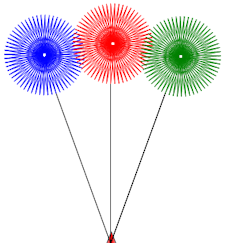- Fms Logo For Mac Os
- Fms Logo Download For Mac
- Fms Logo For Mac Osx
- Fms Logo For Mac Catalina
- Fms Logo Para Mac
- Fms free download - WinTV-USB/FM/ and USB- Live Drivers, Webmaster Radio FM, V3Nity FMS, and many more programs.
- FMS Logo Design Logo design clients are always presented with several initial logo designs to start from. Modifications, changes and colors are adjusted from the favorites.
MISSION: Be the Primary Source supporting Soldiers’ information dominance objectives by developing, implementing and managing commercial Information Technology contracts that provide enterprise-wide net-centric hardware, software, and support services for the Army. Downloadable FMS Files SimBrief now supports over 40 different FMS and route file formats for a variety of simulators, programs, and third-party aircraft. Simply generate a flight plan and select your files from the FMS Downloads list.
Seymour Papert (and others) designed the Logo language to be powerful enough for computer research, but simple enough so that it could be enjoyed by children. Papert used Logo to conduct Artificial Intelligence and Robotics research at the Massachusetts Institute of Technology. One of the robots that Logo controlled had a dome-shaped protective casing over its electronics that made it resemble a turtle. As personal computers became more affordable, the physical turtle was replaced by a virtual turtle on a computer screen. The virtual turtle was given a pen to help it fit into the familiar world of childhood learning. Drawing is already a natural part of childhood, but drawing with Logo is different than drawing with crayons. To draw with Logo, you must learn to think about drawing, enough so that you can teach a complete idiot (the turtle) how to draw.
Throughout the 1980s, as computers became more affordable, Logo was integrated into the curriculum of many schools. This led to a proliferation of different Logo software packages, each sharing the core spirit of Logo, but designed for specific computers.
In the early 1990s, a lecturer at UC Berkeley name Brian Harvey, wanted to write a computer science textbook for non-professional programmers. He selected Logo as the language for his textbook. At this time, there were many Logo environments, each with their own incompatibilities, some of which were no longer available for purchase. To overcome the incompatibilities between different versions of Logo, Harvey created a new version of Logo and ported it to every popular computer of the time. He named it UCBLogo and based his textbook on it. UCBLogo was written 1993 and given away free-of-charge.
Shortly thereafter, a like-minded Englishman named George Mills was inspired by UCBLogo. He ported UCBLogo to a C++ toolkit from Borland that ran on Microsoft Windows, thereby creating MSWLogo (short for 'Microsoft Windows Logo'). MSWLogo retained the UCBLogo base, but added new commands that took advantage of features unique to Microsoft Windows. This became the standard Logo for Windows.
To understand what an accomplishment UCBLogo and MSWLogo were, it's worth considering what the world of personal computing was like in 1993. If home users had any Internet connection at all, it was dial-up at 14.4 Kbps and they were charged by the minute. HTTP was not yet a standard. The fastest Intel CPU was the Pentium running at 66 Mhz. Manufacturers added a 'turbo mode' button that would slow down the Pentium so that software written for older CPUs would function properly. Windows 95 had not yet been released and the personal computer market was dominated by IBM clones that ran DOS or Windows 3.1. In the operating systems of the time, all memory was shared by all programs and a bug in one could crash your entire computer. Most video cards only supported a limited number of colors: some couldn't even show 256 colors. Programmers were accustomed to writing software for a specific computers and throwing it away when the computer became obsolete.
In 2004, I was looking to start a computer workshop with Jim Foster at the Boys and Girls Club in Bellevue, Washington. I picked Logo, which led to MSWLogo, since all of the machines in their computer lab ran Windows 98. I made a few small enhancements to MSWLogo to improve the workflow in my workshop and sent them to George Mills for integration into the next version of MSWLogo. By that time, he no longer had time to work on MSWLogo, so I created my own version. Soon afterward, I got a job at Microsoft and I asked the legal department if it was okay to continue working on MSWLogo. They said there was no conflict of interest, but I couldn't call it 'Microsoft Windows Logo', as that made it sound like it was created by Microsoft, which was trademark infringement. As I looked for a new name, George Mills, whose loved ones had recently contracted Multiple Sclerosis, said that he wanted to keep 'MS' in the name. So began the 'FMS' prefix, which stands for 'Fight Multiple Sclerosis'.

MSWLogo is a freeware software app filed under programming software and made available by Softronix for Windows.
The review for MSWLogo has not been completed yet, but it was tested by an editor here on a PC and a list of features has been compiled; see below.
If you would like to submit a review of this software download, we welcome your input and encourage you to submit us something!
Multimedia Windows version of UCBLogo
MSWLogo is an interpreter language based on Logo, with a GUI front end. Its core is the same as UCBLogo by Brian Harvey. It is free software, with source available, in Borland C++.
Features and highlights
- Easy to learn and use
- Very simple and straightforward interface
- Lots of help material
MSWLogo on 32-bit and 64-bit PCs
Fms Logo For Mac Os

This download is licensed as freeware for the Windows (32-bit and 64-bit) operating system on a laptop or desktop PC from programming software without restrictions. MSWLogo 6.5b is available to all software users as a free download for Windows 10 PCs but also without a hitch on Windows 7 and Windows 8.
Fms Logo Download For Mac
Compatibility with this software may vary, but will generally run fine under Microsoft Windows 10, Windows 8, Windows 8.1, Windows 7, Windows Vista and Windows XP on either a 32-bit or 64-bit setup. A separate x64 version may be available from Softronix.
 Filed under:
Filed under:Fms Logo For Mac Osx

Fms Logo For Mac Catalina
Fms Logo Para Mac
- MSWLogo Download
- Freeware Programming Software
